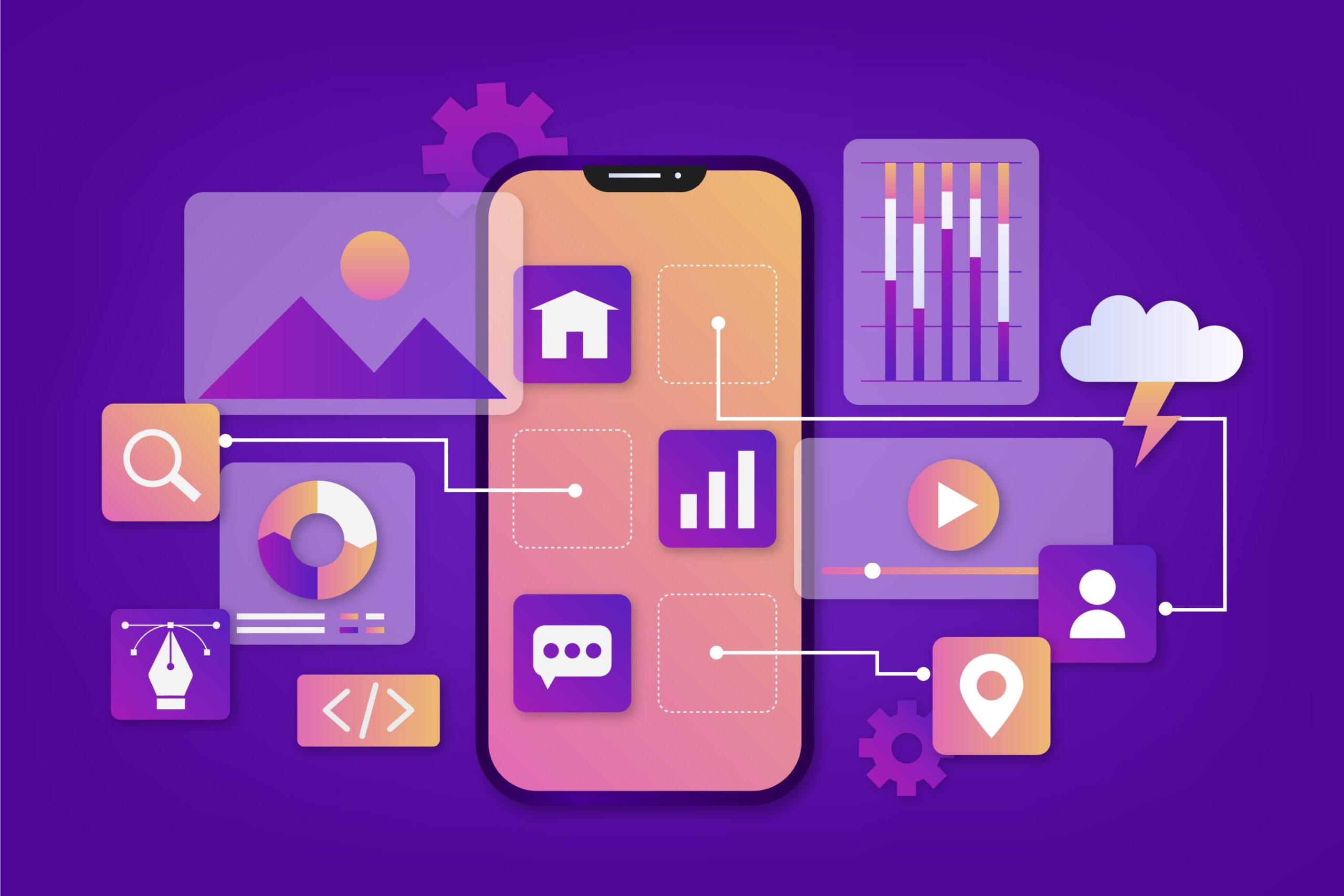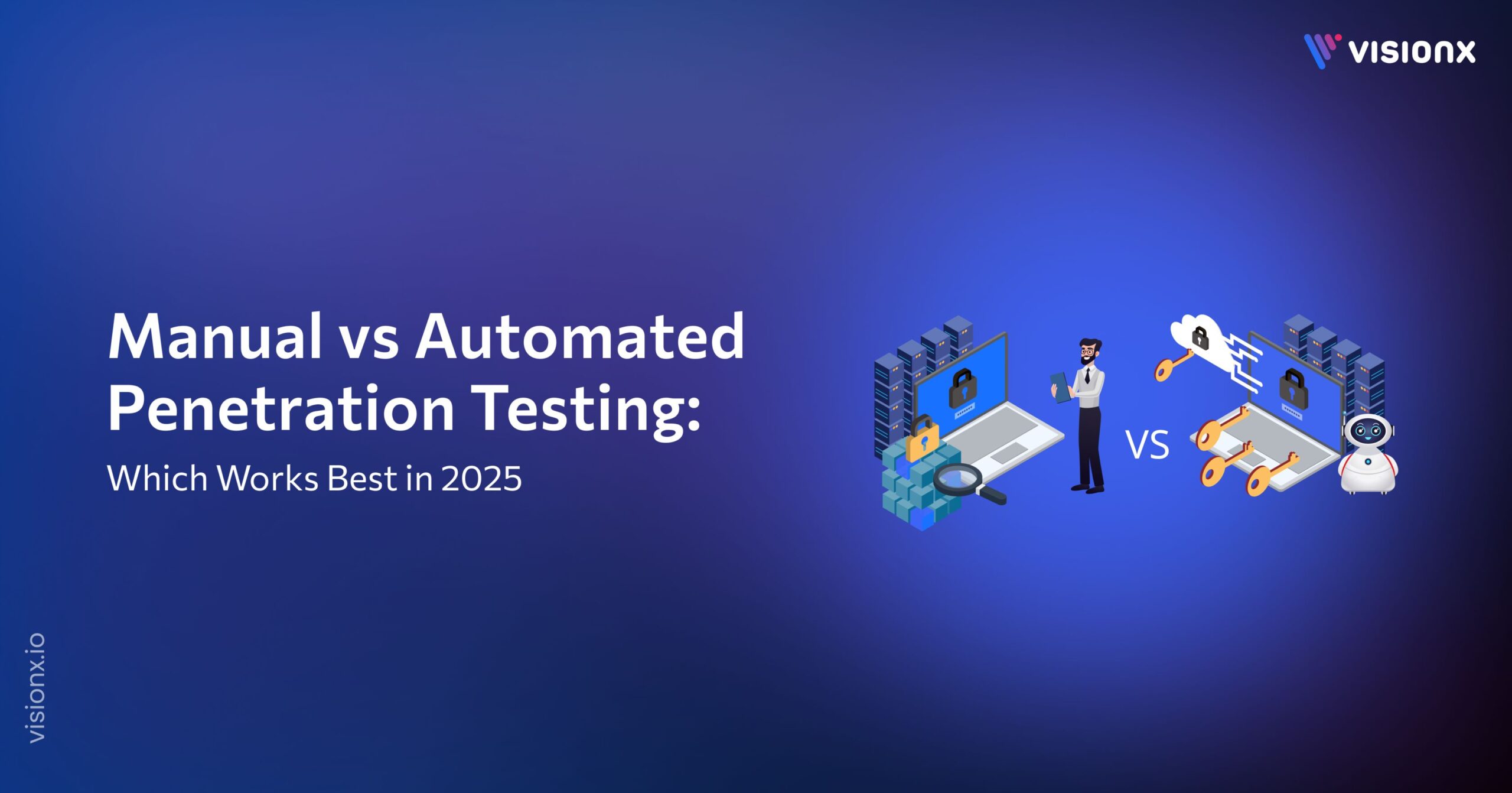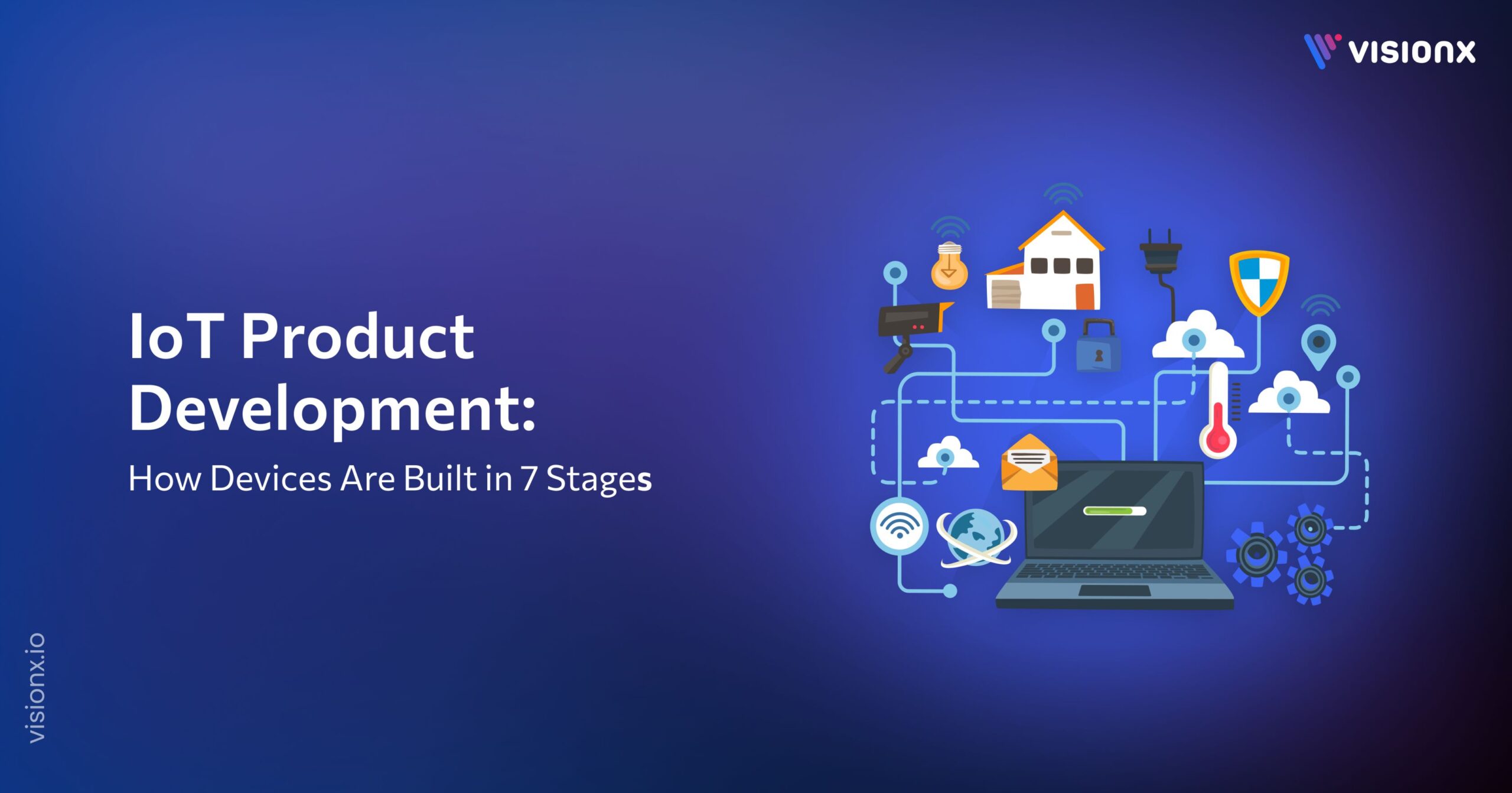The mobile app industry continues its meteoric rise, with millions of apps available across app stores and billions of downloads each year. But for each success story, there are thousands of apps that fail to take off. The competition is relentless.
With over 5 million apps in the Google Play store alone, standing out takes more than just having a great idea for an app. Mobile app developers need strategic and savvy marketing to stimulate genuine user adoption and retention. Simply launching an app does not guarantee that a critical mass of engaged users will come.
Growth doesn’t happen by accident. It requires carefully planned initiatives to attract users, drive conversions, retain users long-term, and stand out from the pack. User acquisition and growth tactics make the difference between an app fizzling out and one that cultivates an active user base and becomes a viable business.
In this article, we share 7 proven mobile app growth strategies that are working right now to help apps acquire users and drive growth in a sustainable way. We’ll cover actionable tactics from optimizing your app store presence to leveraging influencers and paid ads.
7 Mobile App Growth Strategies
-
Onboard Users Effectively
The initial onboarding experience when users first open your app is critical for user retention and growth. A great onboarding flow in mobile app development doesn’t just teach users how to use the app – it delights and gets them engaged from the start.
When users download an app, there is inherent friction and uncertainty about whether it will provide value. Onboarding is the opportunity to demonstrate your app’s core value proposition and get users invested.
An effective onboarding experience should:
- Provide an interactive tutorial on how to use the app’s key features. Don’t just explain – show users by guiding them through workflows.
- Use prompts and cues to highlight important page elements and flows. For example, cues can point out where to tap to access a key feature.
- Celebrate milestone achievements and progress to reinforce positive behavior. Badges, progress bars, and in-app messages can highlight progress.
- Make onboarding fun and game-like rather than boring. Keep users engaged while teaching.
- Segment onboarding so as not to overwhelm users upfront. Spread out over multiple sessions.
- Provide dedicated help or contact resources for any questions during onboarding.
- Encourage sharing and other viral mechanisms right away to capitalize on initial excitement.
Strong app onboarding boosts retention by making the initial experience smooth and enjoyable. It teaches users why they should stick with your app and triggers those critical aha moments where they see the value.
Apps with thorough onboarding can see 30% higher retention rates. When users are confident about how to use the app, they’ll be more engaged long-term. Onboarding also kickstarts vital word-of-mouth growth as users share about your app after an exciting introduction.
Well-executed onboarding is one of the highest-leverage mobile app growth tactics, setting you up for organic, sustainable adoption driven by happy, knowledgeable users.
-
Run Targeted App Store Optimization (ASO)
App Store Optimization (ASO) entails optimizing your app’s store listing to maximize visibility in the app stores. With millions of apps in app marketplaces, ASO is critical for getting your app discovered.
ASO works by optimizing App Store and Play Store listing elements, such as
App Title – Choose a title that clearly communicates your app’s purpose and includes relevant keywords.
App Description – Craft an engaging description that convinces users to download and highlights keywords.
Keywords – Research and select keywords users are searching for that are relevant to your app.
Screenshots/Videos – Display screenshots and videos that showcase your app’s best features and UX.
Localization – Translate your listing content to reach users in other languages/regions.
Some best practices for ASO include:
- Researching keywords users search for in your app category and bidding on those keywords. Tools like AppAnnie can help.
- Writing localized app descriptions to optimize for different regions.
- Experiment with variations of your title, icon, and screenshots using A/B testing.
- Monitoring keyword rankings and optimizing based on search volume and competition.
- Asking users to rate/review your app helps with rankings.
The right ASO plan improves your app’s visibility in the app stores, helping you get found by your ideal users organically. It’s one of the most effective ways to drive free user acquisition. ASO is an ongoing process as app marketplaces and keyword trends evolve over time.
-
Build a Referral Program
A referral program incentivizes your existing users to refer friends and contacts to your app. This amplifies word-of-mouth sharing which is a powerful driver of sustainable app growth.
Referrals convert at a high rate because they come from a trusted source. A user is more likely to try out an app recommended by a friend.
Effective referral program strategies include:
- Offering existing users a reward like app currency or discounts for successful referrals. The more referrals, the better the reward.
- Making it easy to share via custom referral links, social posts, email, etc. Integrate the referral flow into your app.
- Tracking referrals and providing real-time progress updates to users so they stay motivated.
- Using gamification by framing referrals as completing challenges and milestones that unlock rewards.
- Targeting influencers and power users who can generate more referrals if properly incentivized.
- Promoting the program through email campaigns, social media, and in-app messages.
A solid referral program turns your users into evangelists. Apps see 2-3x higher conversion rates from referred users over non-referred. Plus it’s a scalable growth tactic – as your user base grows, so does your referral potential.
Referral programs encourage organic sharing of your app, leading to highly qualified users from within trusted social circles. It leverages the power of word-of-mouth on a bigger scale.
-
Double Down on Email Marketing
Email marketing is a powerful way to engage and re-engage users while also nurturing leads to drive app downloads. Segmented and personalized email campaigns keep your app top of mind.
Some effective email marketing tactics include
- Welcome series to onboard new subscribers with educational content leading to app download call-to-actions.
- Promotional emails with deals, contests, or exclusive content to incentivize usage and sharing.
- Surveys to gather feedback for improvements while making users feel valued.
- Behavioral emails triggered by user actions like abandoned carts or browsed products.
- Reactivation campaigns to win back churned users with special offers.
- Newsletters with app updates, new features, user spotlights, and industry news.
- Retargeting ads to serve ads across channels to users who previously engaged.
Personalization is key for email marketing. Leverage data like name, behavior, demographics, and interests to craft targeted messaging that resonates better. Personalized emails have open rates 3x higher than generic outreach.
Make subscribers feel special by using their name, sending birthday offers, and rewarding loyalty. Segment your audience for tailored communications based on user types like super users.
Email is more cost-effective than other paid channels for user acquisition. An optimized email strategy keeps users engaged, converts subscribers into active users, and fuels sustainable app growth over time through continual nurturing.
-
Acquire Users Through Paid Ads
Paid advertising campaigns are a direct way to get your app in front of new audiences and drive user acquisition. Platforms like Facebook, Instagram, TikTok, Google, and Reddit all offer mobile app install ads.
Paid ads work by:
- Serving your ad creative to targeted user demographics that match your ideal audience.
- Optimizing towards an objective like driving app installs or purchases.
- Only paying when users click your ad or complete a conversion action.
Some best practices for running effective app install ad campaigns are:
- Testing different ad creatives like images, videos, or carousels to identify what resonates.
- Starting with interests, behaviors, and basic demographic targeting, then optimizing based on performance.
- Using robust app event tracking to understand what actions users take post-install, like sign-ups.
- Setting up A/B test campaigns to experiment with audiences, creatives, and variables like budget and bid.
- Analyzing metrics like CPI (cost per install), and CPA (cost per acquisition) to optimize for return.
- Retargeting engaged users across channels with personalized creative and offers.
With an optimized paid strategy combining creatives, targeting, re-engagement, and testing, you can scale user acquisition in a measurable way and identify high-performing channels.
Paid ads put your app front and center for relevant audiences, allowing you to grow your user base through paid growth efforts rapidly. Apps see an average 5X return on ad spend from paid campaigns.
-
Leverage Influencers and Content
Influencer marketing and content creation are powerful ways to attract new app users.
Partnering with relevant influencers provides access to their follower base. Some effective influencer marketing tactics include:
- Identifying influencers in your niche with engaged audiences. Micro-influencers can provide value too.
- Offering free app access or unique perks to influencers in return for content.
- Facilitating giveaways or contests for increased user generation.
- Sponsoring influencer content like app reviews and tutorial videos.
- Leveraging user-generated content by reposting from customers.
High-quality content that educates and entertains also attracts organic users:
Blog posts and guides that provide actionable tips related to your app capabilities.
Industry analysis content that provides unique insights and builds thought leadership.
News related to your market that highlights relevant app features.
Product teasers and announcements that give users early access.
Visual content like photos and videos that engage users emotionally.
Thought leadership content shows your app understands user needs and provides ongoing value. This nurtures leads, builds brand affinity, and converts readers into engaged users over time.
Influencers and content are low-cost growth vectors compared to paid ads. An integrated influencer and content strategy engage potential users early in their journey with your brand across channels.
-
Analyze Data to Refine Efforts
In today’s digital landscape, data is paramount for optimizing marketing efforts and maximizing returns from growth initiatives. Mobile analytics provide the valuable user insights needed to continually refine your app growth strategies.
Some key ways to leverage analytics for growth include:
-
- Setting up dashboards to monitor core metrics like downloads, activations, churn, and engagement.
- Analyzing user cohorts to uncover trends among valuable user segments like power users.
- Running A/B tests on elements like onboarding flows, email copy, and ad creatives to identify what resonates.
- Attributing growth to specific campaigns by tracking UTM codes and install sources.
- Performing geo and demographic analysis on converts vs. non-converts.
- Monitoring time series data to detect changes and their causes.
- Identifying areas of friction causing drop-off like uninstalls.
Essentially any app growth experiment, campaign, or initiative can and should be tracked to determine ROI. The insights gleaned allow you to double down on what works and improve poor performers.
Optimization is a continual process. Analyzing the right app data provides the feedback needed to refine marketing efforts. Quantifying results and understanding user behavior are key to maximizing installs, adoption, retention, and long-term app growth.
With the right analytics foundation, data becomes your secret weapon for growing apps. Instrument everything and let the numbers guide your user acquisition strategy.
Conclusion
There are a multitude of proven mobile app growth strategies available today, but no single approach guarantees results. The key is identifying and committing to the tactics that align with your app’s unique goals and target audience.
While each strategy provides its own growth benefits, combining selected approaches creates an amplifying effect. For instance, paid ads can attract users, then email marketing nurtures them, and referral programs facilitate sharing – driving exponential growth.
The growth journey requires testing and refinement based on your app attributes and metrics. Focus on one or two strategies first that show the most promise. Over time, expand efforts while phasing out any underperformers.
Growth takes persistence and commitment to see tangible results. Use the strategies in this guide as inspiration to start actively acquiring users and building your app community.


